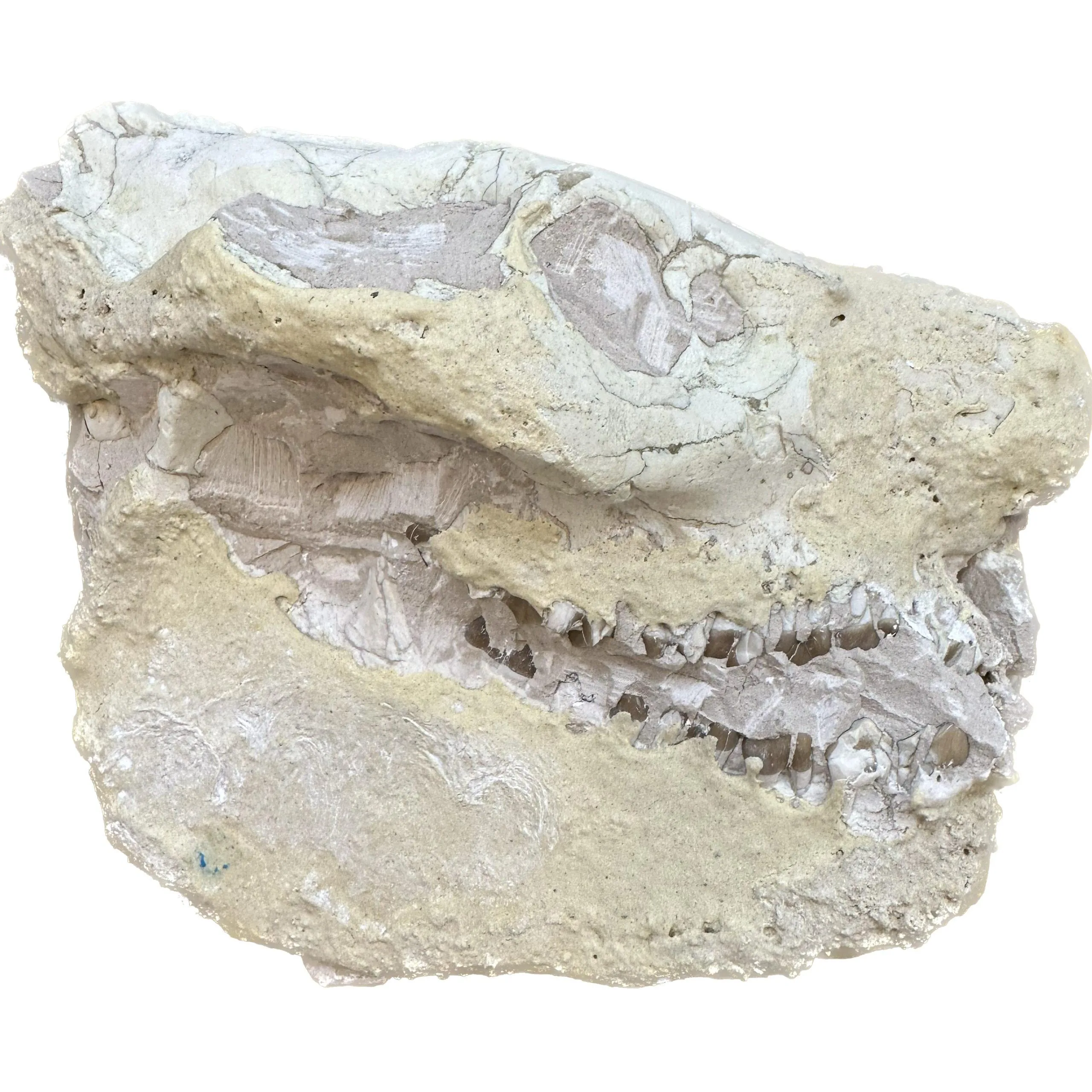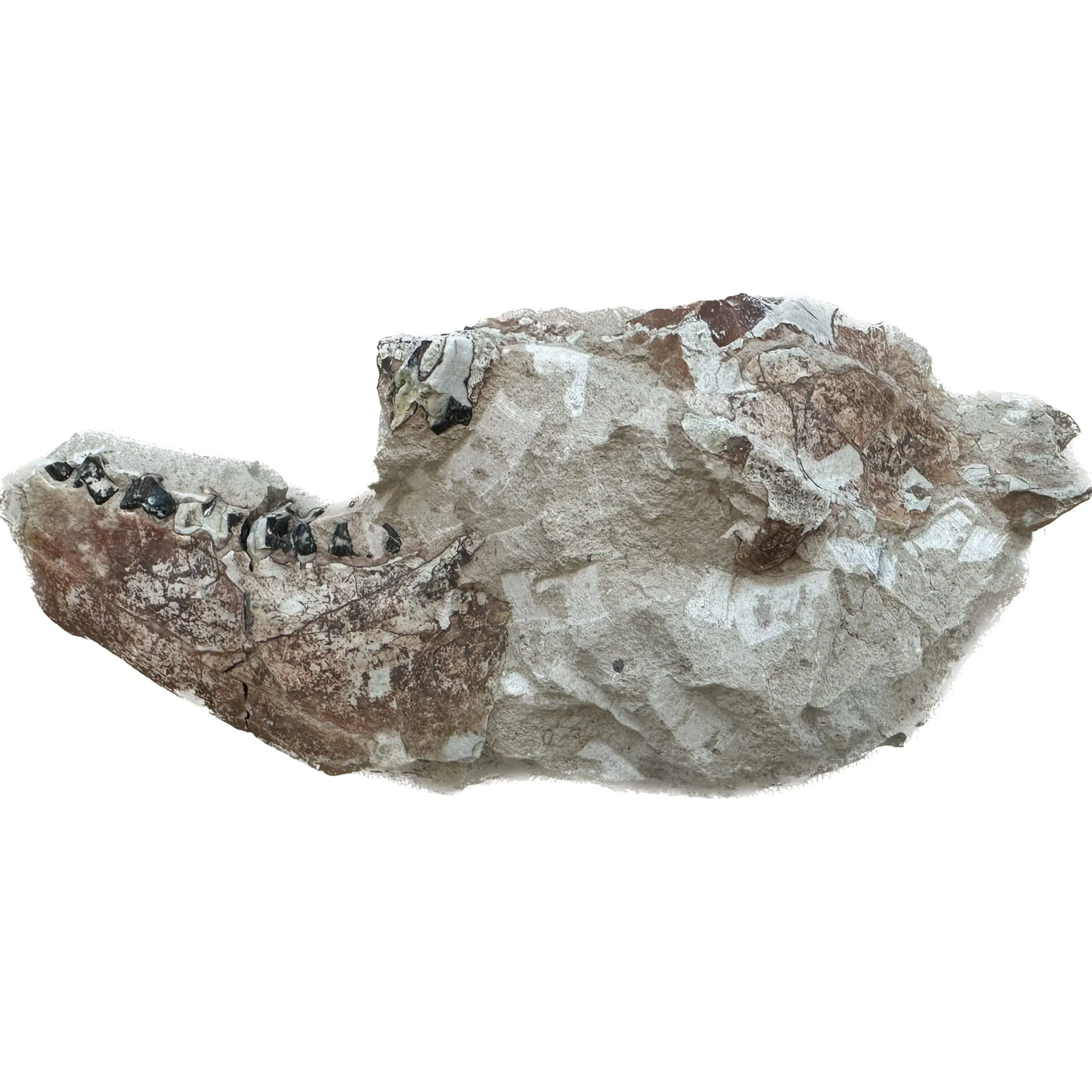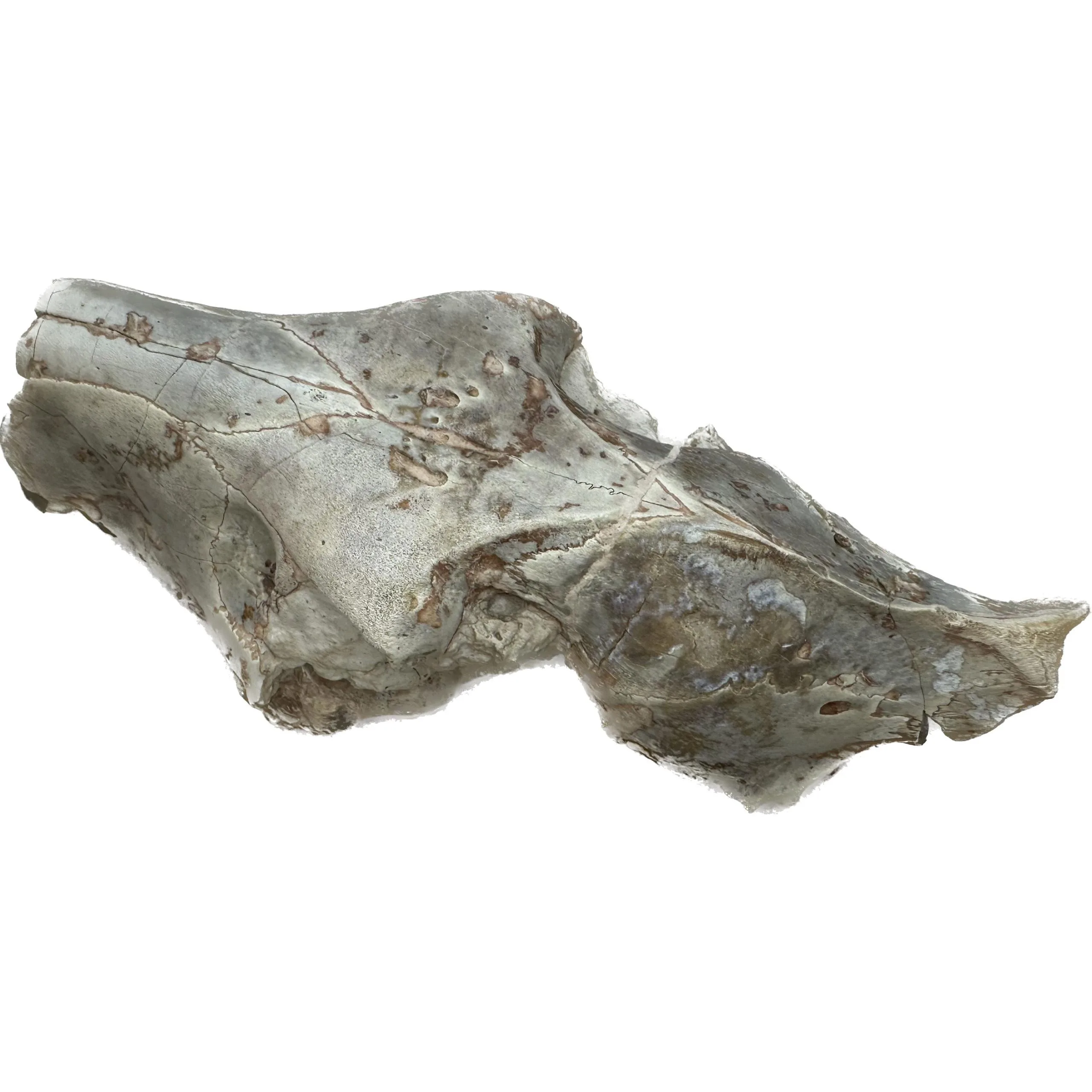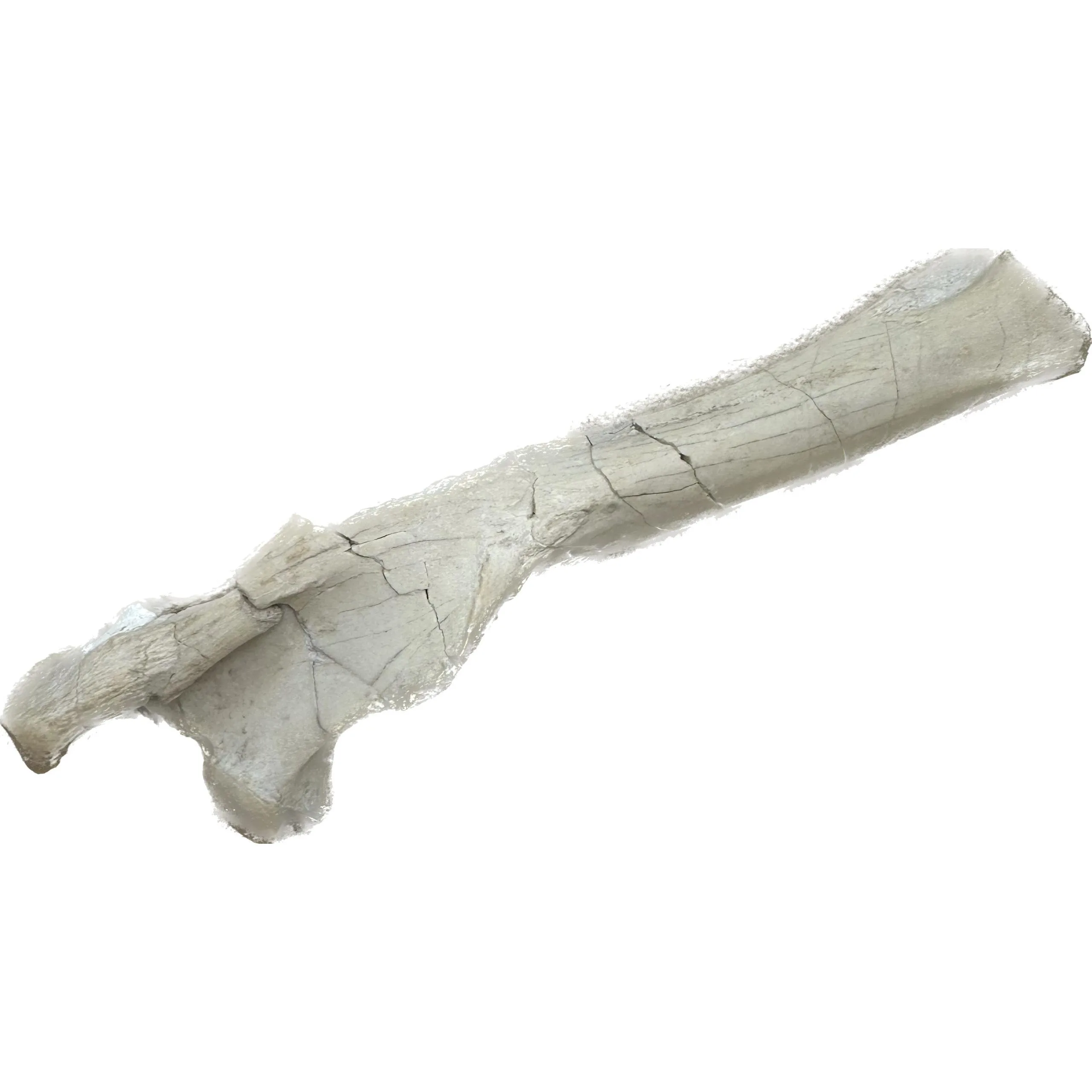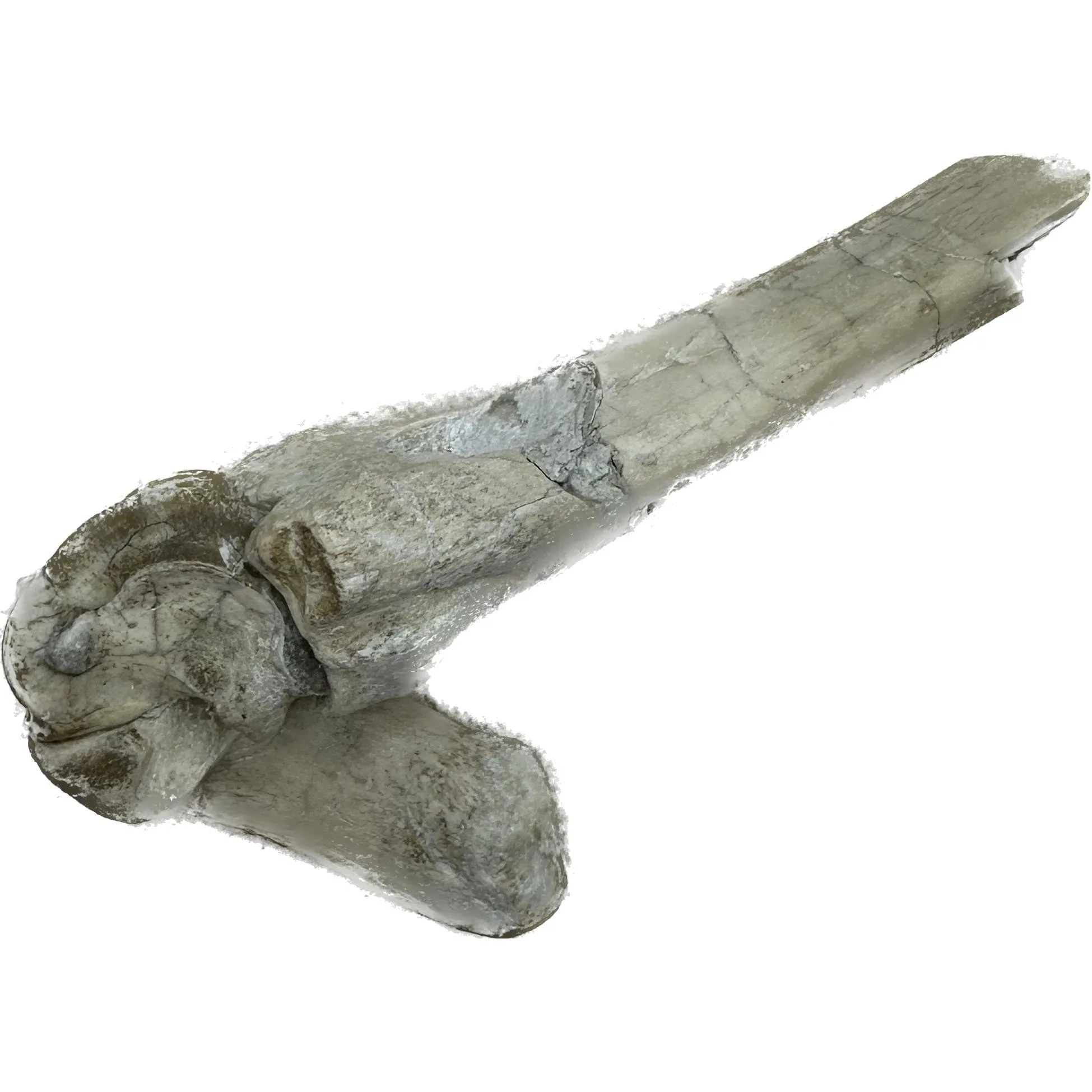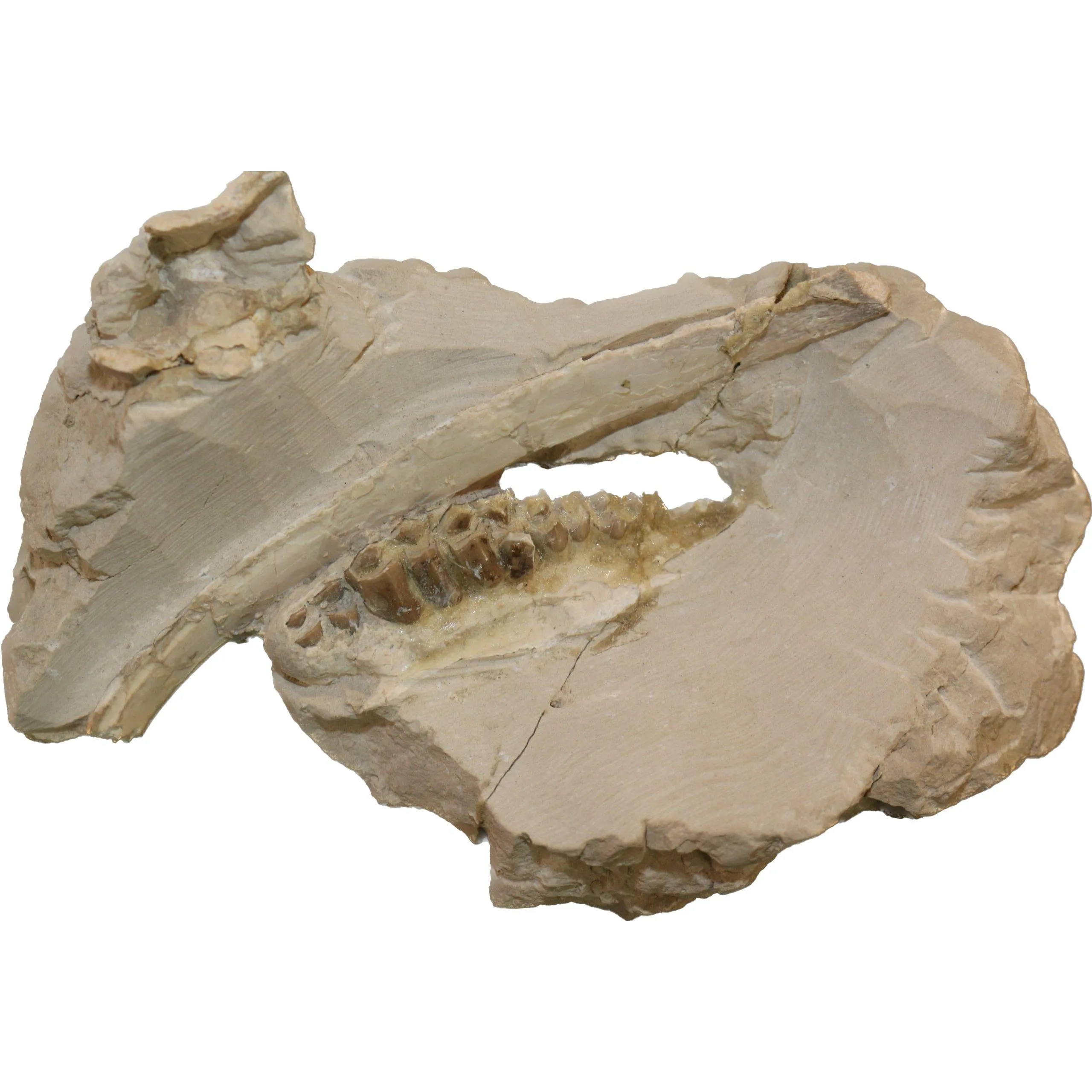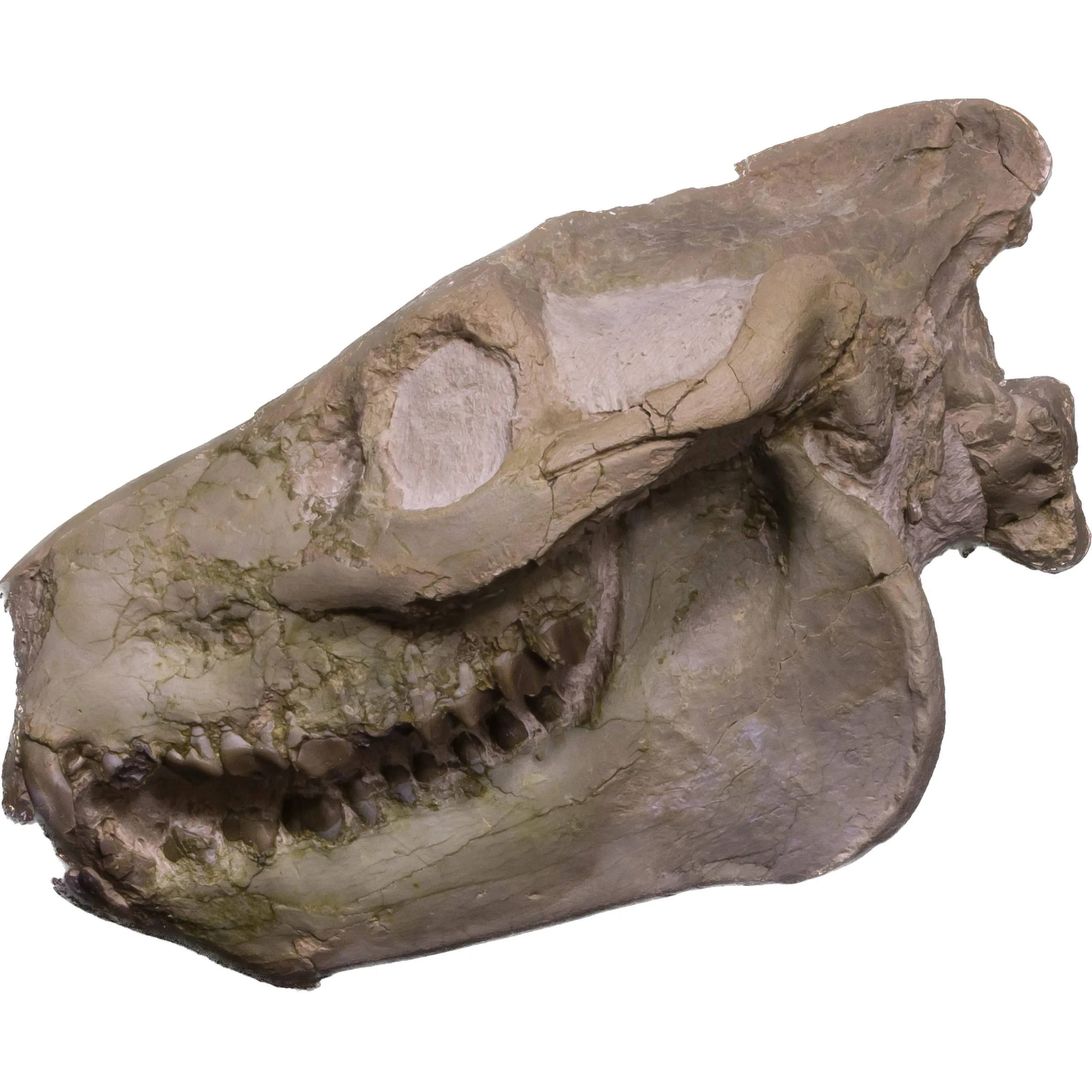Showing all 7 results
-
Oreodont Skull – South Dakota
$495.00 -
Oreodont Skull, South Dakota
$1,800.00
Oreodonts were a diverse group of extinct herbivorous mammals that lived in North America during the Eocene to Miocene epochs, approximately 45 to 5 million years ago. They were hoofed mammals related to modern-day camels and pigs, although they were not direct ancestors of either. Oreodonts varied in size, with some species being as small as a rabbit and others as large as a sheep. They had a wide geographic distribution across North America and occupied a range of habitats, from forests to grasslands. Oreodonts are known for their distinctive teeth, which were adapted for grinding tough vegetation. They likely played an important role in the ecosystem as herbivores, helping to shape the vegetation communities of their time. Oreodont fossils are relatively common and have provided valuable insights into the evolution and ecology of ancient North American mammals.

